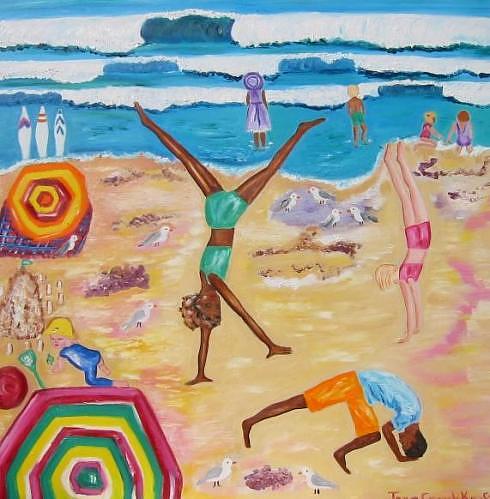
In heat exhaustion, the body collapses due to excessive loss of fluid from sweating too much and drinking too little. It does not necessarily have to be a very sunny day. Unlike sunstroke, the skin is pale, cold and clammy. There is no fever. Blood pressure is low and the pulse slow and weak. Sudden drenching sweats signal the start of heat exhaustion. Anxiety, weakness and fatigue arise long before the collapse, Heat exhaustion is much less serious, and through it should also be carefully monitored.Both heat exhaustion and sunstroke are easily avoided with simple measures. Intense exercise in the sun and heat can easily lead to exhaustion and heavy sweating. if exercising in the heat cannot be avoided, drinking enough liquids with sufficient minerals, particularly salt, is of utmost importance. I myself, in very hot climates always take ? teaspoon of salt everyday with a glass of water, but I tend to lose a lot of salt.The signs and symptoms of heat exhaustion are as follows:1. The skin is pale and clammy.2. The skin shows evidence of profuse perspiration.3. Breathing is rapid and shallow.4. The pulse is rapid and weak.5. The victim may complain of nausea, weakness, dizziness, and/or headache.The first aid for heat exhaustion is as follows: Move the victim to a cool and comfortable place, but do not allow chilling.try to cool the victim by fanning and/or wiping the face with a cool, wet cloth, or immersing the person in a tub of cool water, or placing the person in a cool shower, or spraying the person with water from a garden hose – anything that seems feasible at the time.Loosen the victim’s clothing.if fainting seems likely, have the victim lie down with feet elevated 8 to 12 inches.Treat the victim for shock.Heat stroke occurs when the natural requirements of our body’s temperature get disturbed. our skin and are the natural control mechanisms of our body and they adjust to the heat under normal conditions. but when exposed to high temperatures for longer periods, then these systems fail to work properly. 1. Heat CrampsAnother name for heat cramps is the muscle spasms. Vigorous exercising and profuse perspiration are the main causes behind this problem. These factors directly affect your abdominal muscles and ones that you use during exercising.2. Heat StrokeIt affects mostly the elders and the obese people. other risk factors of this heatstroke can be listed as dehydration, heart disease, vigorous exercise, certain medications and alcohol use. People who are born with the inability to perspire or sweat are highly prone to this. 3. Heat ExhaustionHow do you come to know if the problem due to heat is heat exhaustion or any other heat-related problem? The answer is through the signs, and the signs are rise in temperature, faintness, low blood pressure, fast heartbeat, cold, clammy skin and nausea. The symptoms are a result of sudden excessive perspiration and inadequate fluid intake.